#Mnemiopsis
Explore tagged Tumblr posts
Text
Мнемиопсис - древнейший, люминесцентный организм.
Mnemiopsis is an ancient, luminescent organism.
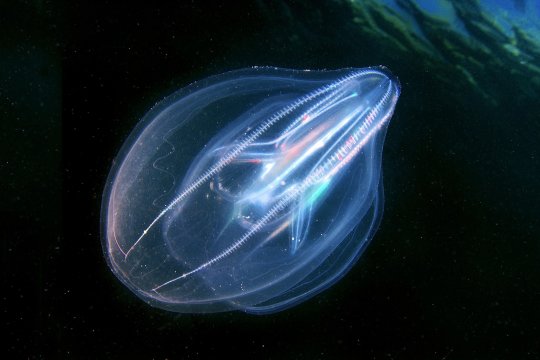
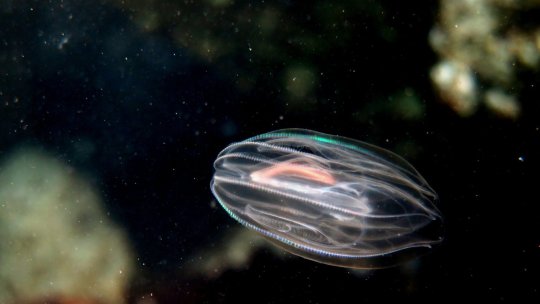

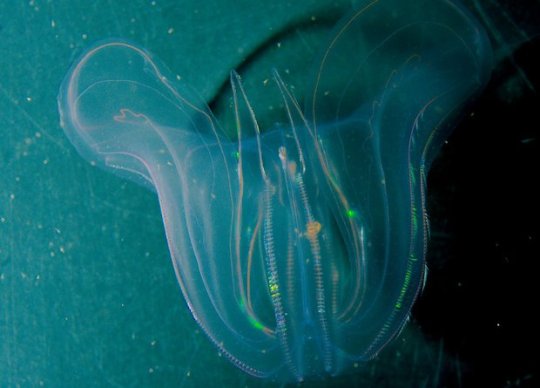

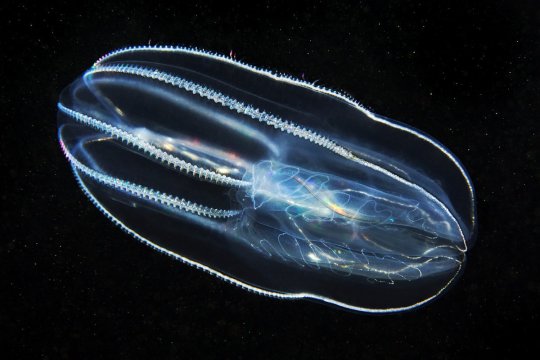
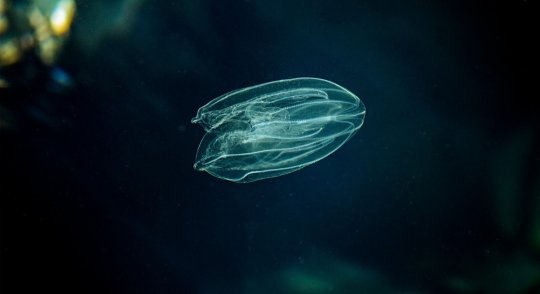
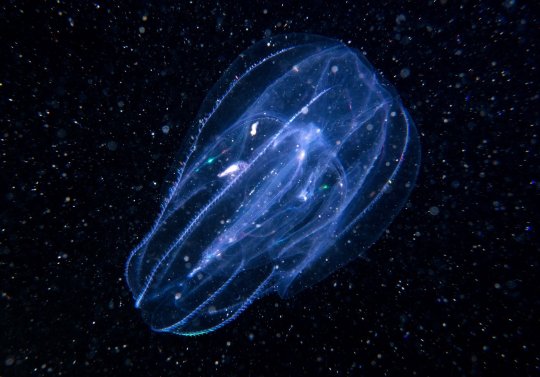

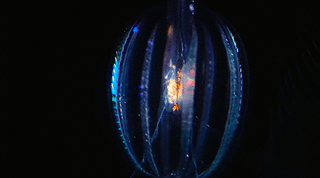
Гребневики не являются медузой, даже не имеют с ними родственных связей, хотя называть их по другому не выходит. Внешне мнемиопсисы легкие, прозрачные, с юбочками-лопастями и гребными пластинами. У них нет мозга, сердца, скелета, зато есть нервная система, орган равновесия и способность к люминесценции. Мнемиопсис – хищник, это плотоядное животное питающийся зоопланктоном, икринками, личинками рыб и моллюсков. На свету переливается яркими цветами, ночью придает морским волнам желтоватое люминисцентное свечение.
По самым последним данным ученых гребневик является одним из первых живых созданий на планете Земля. Ранее считалось, что этот титул принадлежит морским губкам — гораздо более примитивным существам.
Совсем недавно Гребневик Мнемиопсис (Mnemiopsis leidyi) – обитал лишь по ту сторону океана: вдоль восточного побережья Северной и Южной Америки, от Канады до Аргентины. Но, благодаря интенсивному судоходству, вместе с балластными водами он перебрался и в Европу. Как оказалось, гребневик может приспосабливаться к большому диапазону солёности. Теперь его ареал обитания включает Чёрное море, Азовское, Эгейское и Мраморное моря, западное побережье Швеции, даже почти пресное Балтийское море .
Ctenophores are not jellyfish, and they are not even related to them, although it is impossible to call them anything else. Externally, Mnemiopsis are light, transparent, with blade-like skirts and paddle plates. They do not have a brain, heart, or skeleton, but they do have a nervous system, an organ of balance, and the ability to luminesce. Mnemiopsis is a predator, a carnivore that feeds on zooplankton, eggs, and larvae of fish and mollusks. In the light it shimmers with bright colors, at night it gives the sea waves a yellowish luminescent glow.
According to the latest data from scientists, the ctenophore is one of the first living creatures on planet Earth. Previously it was believed that this title belongs to sea sponges - much more primitive creatures. More recently, the Ctenophore Mnemiopsis (Mnemiopsis leidyi) lived only on the other side of the ocean: along the eastern coast of North and South America, from Canada to Argentina. But, thanks to intensive shipping, it moved to Europe along with ballast waters. As it turns out, the ctenophore can adapt to a wide range of salinity. Now its habitat includes the Black Sea, the Azov, Aegean and Marmara Seas, the western coast of Sweden, even the almost fresh Baltic Sea.
Источник: telegram Океан,
nplus1.ru/news/2020/05/08/mnemiopsis,
/www.nkj.ru/archive/articles/23340/, /pikabu.ru/story/mnemiopsis__chuma_xxi_veka_4346622,/turizm.pibig.info/19015-grebnevik-v-chernom-more-mnemiopsis.html,
/ezoteriker.ru/grebnevik-beroe-v-chernom-more-mnemiopsis-chuma-hhi-veka-9-foto-mnemiopsis/,
//spadilo.ru/grebneviki-meduzy-ili-polipy/,
/dzen.ru/a/YbGQswZ7Y0VAg-7O,
/myanapa.ru/fauna/invertebrates/grebnevik/,
//seaforum.aqualogo.ru/topic/54177-гребневик-мнемиопсис-mnemiopsis-leidyi/.
#fauna#video#animal video#marine life#marine biology#nature#aquatic animals#sea creatures#Ctenophores#Mnemiopsis#luminesce#sea view#sea#beautiful#animal photography#nature aesthetic#animal gif#видео#фауна#природнаякрасота#природа#море#Гребневик#Мнемиопсис#люминесценция#планктон#гиф
84 notes
·
View notes
Text
When things get tough in adulthood, it might seem appealing to return to simpler times. One bizarre marine creature has taken this approach to dire situations quite literally, regressing its physical adult body to a juvenile stage once the stress of starvation or injury has subsided. Until now, the immortal jellyfish (Turritopsis dohrnii) was the only species thought to be able to wind back the clock on jelly-puberty like this, but now it's joined by Mnemiopsis leidyi, better known as the sea walnut or the warty comb jelly.
Contiue Reading.
1K notes
·
View notes
Text
TWO INJURED SEA COMBS CAN FUSE INTO A SINGLE ENTITY, AND THRIVE
In a surprising new discovery, scientists have found that two injured individuals of Mnemiopsis leidyi, a species of comb jellies or ctenophores, can fuse into a single entity. This phenomenon, which challenges our typical understanding of biological processes, reveals just how remarkable these planktonic creatures truly are.
Ctenophores, known for their translucent beauty and delicate movement in the ocean, appear to lack a mechanism called allorecognition—the ability to distinguish between self and non-self. This means that, when two comb jellies are injured and placed close together, they can merge, not just physically, but also functionally. Their nervous systems combine, allowing them to share nerve signals (or action potentials), and even their digestive systems become one.
The discovery was made by Dr. Jokura and his team, who were observing comb jellies in a seawater tank. After removing parts of their lobes and placing them side by side, they were astonished to see 9 out of 10 injured comb jellies fuse to form a single organism. Even more fascinating, the newly formed organism survived for at least three weeks, with its muscle contractions fully synchronized within just two hours. The digestive system also fused, enabling food taken in by one mouth to travel through their shared canal and exit through both anuses—although not at the same time!
While the exact benefits of this fusion are still unclear, the researchers believe that studying this phenomenon could provide valuable insights into how organisms integrate nervous systems and even how tissue regeneration occurs. It may also offer clues about immune system functions in species where the lines between individual organisms become blurred.
This discovery offers a glimpse into the hidden potential of the ocean’s lesser-known inhabitants, challenging what we think we know about biological boundaries and cooperation.
Video: Kei Jokura
Reference: Jakura et al., 2024. Rapid physiological integration of fused ctenophores. Current Biology
#Mnemiopsis leidyi#what?#ctenophora#combjellie#science#marine science#biology#marine biology#sciblr#scienceblr
1K notes
·
View notes
Text

Pre-work art, because my brain only wants to think of comb jellies. We have my techno OC, Leidyi (who is missing most of her fun details) with Mnemiopsis leidyi, the comb jelly species she was inspired by. A better version to made who knows when, if ever
#dreamworks trolls#king chewy art#trolls original character#ctenophore#i love comb jellies#mnemiopsis leidyi#comb jelly
6 notes
·
View notes
Video
youtube
The ctenophore Mnemiopsis leidyi (sea walnut) in our laboratory in Bergen, Norway.
1 note
·
View note
Text
These are not even close to being deep-sea creatures? Mnemiopsis leidyi is a shallow-water coastal comb jelly—a famously shallow-water comb jelly, in fact, owing to their being virulently invasive across Europe and Asia due to being common ballast water hitchhikers. They’re native to the western Atlantic and can be found up and down the Americas, including the notoriously not-very-deep Chesapeake Bay. Which is why you can easily put them in petri dishes and bother them with pipettes for gifs, lmao.
Interesting news for fucked up weirdos who enjoy body horror and exploring differences between Self and Other
#‘[merging] is much less likely in the deep sea’ good news that’s not where they are???#in fact they are one of the major culprits in deleterious gelatinous plankton blooms in the black & mediterranean seas#before they also introduced Beroë the Mnemiopsis density was frequently quite high actually
33K notes
·
View notes
Text
Reconocerse en el otro… ¡Literalmente!
¿Alguna vez has observado algo y de repente notaste un detalle que no encaja? A veces, este tipo de sorpresa puede llevar a un descubrimiento increíble, especialmente si estás observando un tanque lleno de ctenóforos.
Pero, ¿qué son los ctenóforos? Son organismos marinos transparentes, delicados y hermafroditas que se reproducen sexualmente. Viven principalmente en mar abierto y son conocidos por su belleza luminosa y bandas iridiscentes. El nombre "Ctenophora" proviene del griego "ktenos" (peine) y "phoros" (portador), refiriéndose a los característicos cilios en forma de peine que utilizan para moverse. Aunque a menudo se les confunde con las medusas, pertenecen a un filo diferente.
Ahora imagina estar en un laboratorio, frente a un tanque lleno de Mnemiopsis leidyi, conocida también como la nuez de mar, una de las especies invasoras de ctenóforos más notorias del mundo. Esta especie puede comer hasta diez veces su peso corporal al día, matando de hambre a ecosistemas enteros al devorar todo lo que está en la base de la cadena alimentaria. Mientras observas detenidamente, algo llama tu atención: un individuo inusualmente grande con dos extremos posteriores y dos órganos apicales en lugar de uno. No, no estás viendo doble, es un solo ctenóforo. Esta peculiar observación llevó a un grupo de científicos japoneses a hacerse una pregunta: ¿es posible que estos ctenóforos, probablemente heridos durante la recolección, hayan fusionado sus cuerpos durante la curación, aprovechando el espacio limitado en el tanque?
Para responder a esta pregunta, los científicos decidieron probar su hipótesis con un experimento. Removieron parcialmente los lóbulos de otros individuos, colocándolos en estrecho contacto y fijándolos en platos de disección. ¿El resultado? En nueve de cada diez casos, las lesiones se fusionaron durante la noche, creando un tejido continuo. Estos animales fusionados lograron sobrevivir al menos tres semanas.
Pero el descubrimiento no termina aquí. Después de una sola noche, los dos individuos originales se habían convertido en uno solo, sin signos visibles de separación. Cuando los investigadores estimularon un lóbulo, todo el cuerpo fusionado reaccionó con una contracción sincronizada. Además, ¡sus sistemas digestivos también se habían fusionado! Cuando una de las bocas ingería comida coloreada con fluorescencia, se podían observar las partículas pasar a través del canal fusionado y ser expulsadas por ambos orificios anales, aunque no de manera simultánea.
Estos resultados demuestran no solo el comportamiento único de estos extraordinarios animales, sino también sugieren que M. leidyi podría carecer de alorreconocimiento—la capacidad de distinguir entre uno mismo y los demás—un mecanismo que previene la fusión entre individuos de la misma especie. En los seres humanos, esta capacidad es lo que causa el rechazo de los órganos trasplantados. Los ctenóforos se encuentran entre los grupos de animales más antiguos entre los metazoos actuales, poseen un sistema nervioso único, y su falta de alorreconocimiento podría ayudarnos a entender mejor cuándo evolucionó este mecanismo en los animales.
¡Hasta pronto y buena ciencia!
fuente

#drops of science#ciencia#ciencias naturales#blog#podcast#noticias#novedades#blog científico#noticias científicas#ctenóforos#Mnemiopsis leidyi#fusión celular#alorreconocimiento#medusas#ecosistemas marinos#descubrimientos científicos#animales marinos#biodiversidad#biología marina#organismos transparentes#sistema nervioso único#metazoos#nuez de mar#invertebrados
0 notes
Text
Taraklıların Şaşırtıcı Kaynaşma Özellikleri
Taraklıların Şaşırtıcı Özellikleri Denizanasına benzeseler de, onların çok uzak akrabası olan taraklılar (Ctenophores), boyutları birkaç milimetre ile 1,5 metre arasında değişen ilginç deniz canlılarıdır. 700 milyon yıl önce evrilen bu canlıların, günümüzde hâlâ hayatta olan en eski hayvan grubu olduğu tahmin edilmektedir. Özellikle bu şubedeki Mnemiopsis leidyi türleri, kendini yenileme…
#Araştırma#biyoloji#Ctenophores#deniz canlıları#evrim#kaynaşma#Mnemiopsis leidyi#Sindirim Sistemi#sinir sistemi#taraklılar
0 notes
Text
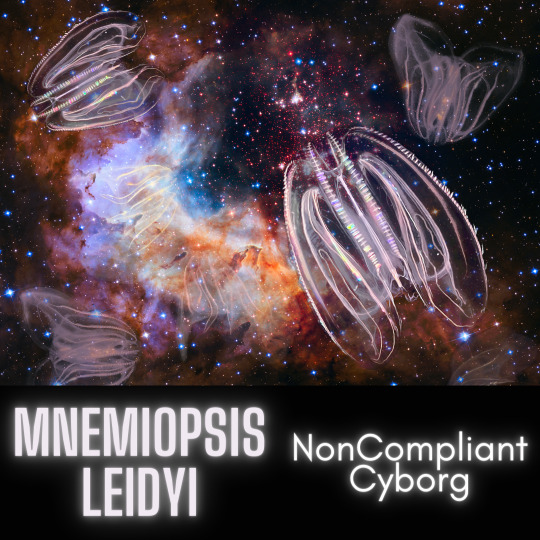
I've really not been keeping up with my plan of sharing a print a day for January but here's some ctenophores in space!
Note on image credit: The background image is modified from a public domain image taken with the Hubble Space Telescope with credit to NASA, ESA, the Hubble Heritage Team (STScI/AURA), A. Nota (ESA/STScI), and the Westerlund 2 Science Team. The ctenophores are all photos by me and I created the edit.
#ctenophore#comb jelly#Mnemiopsis leidyi#art print#marine invertebrates#marine biology#marine life#sea creatures#ocean#my marine life photos#wall art
0 notes
Text
Round 2.5 - Ctenophora - Tentaculata




(Sources - 1, 2, 3, 4)
One of two classes of Ctenophora is Tentaculata, the “Tentaculate Comb Jellies.”
The common feature of this class is a pair of long, feathery, contractile tentacles, which can be retracted into specialised ciliated sheaths. Instead of stinging cells, the tentacles have colloblasts, which are sticky-tipped cells that trap small prey. Some species may flick their tentacles to lure prey by behaving like small planktonic worms. Body size and shape vary widely among tentaculatans. Some are bioluminescent, allowing them both to scare away predators and attract small prey: from microscopic larvae and rotifers to the adults of small crustaceans. They are named for the comb rows of cilia which they use to swim. The beating of these combs refract light, producing rainbow-like colors.
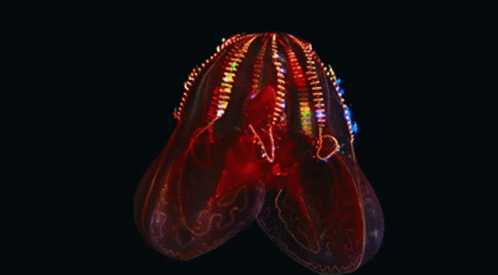
Propaganda under the cut:
The Redspot Comb Jelly (Eurhamphaea vexilligera) is unique in that it can actually produce bright orange-yellow ink as a means of escaping predators
The “Warty Comb Jelly” or “Sea Walnut” (Mnemiopsis leidyi) (though I grew up calling them “Leidy’s Comb Jellies”) (image 4) has an oval-shaped and transparent lobed body that glows blue-green when disturbed. It is biologically immortal, can consume ten times its body weight, and its anus only appears when it’s ready to defecate. They are native to western Atlantic coastal waters, but have become established as an invasive species in European and West Asian regions.
Named after the Greek goddess of sailors, the genus Leucothea can be identified by their oblong bodies which have fairly long lobes, taking up almost half of their length. They are transparent, bioluminescent, and have gelatinous spikes that are thought to serve a sensory purpose as they are found to point towards stimuli, the way a ship points towards its destination.
The Venus Girdle (Cestum veneris) (image 3) is the largest ctenophore of all known ctenophores, reaching up to a 1.5 metres (4.9 ft) in total length. Venus girdles resemble transparent ribbons with iridescent edges. Canals run the length of the ribbon in which bioluminescence activates when disturbed.
Haeckelia is a genus of ctenophore which is unique in that, instead of colloblasts, it has cnidocytes, explosive stinging cells usually only present in cnidarians. It does this by stealing and retaining cnidocytes from its cnidarian prey.
Some deep sea tentaculatans are blood red, as this allows them to be camouflaged in the deep sea, where red light does not reach.
47 notes
·
View notes
Text
Tough Nut
While humans have to make do with love, abstract maths and making a decent lasagne, there are creatures on Earth capable of other enviable feats. Axolotl can regenerate most of their organs after injury, and researchers find this ‘sea walnut’ (Mnemiopsis leidyi), to be biologically immortal. After a period of severe stress or injury, M. leidyi undergoes ‘reverse development’, shrinking and resetting some of its tissues to an earlier developmental stage to better repair and recover. This incredible behaviour has parallels with certain jellyfish species such as Turritopsis dohrnii, but there may be lessons here for mammals too. While it’s unlikely we’ll be immortal any time soon, M. leidyi could be used as a model organism for studying the molecular details of ageing and rejuvenation – perhaps helping us to heal faster from injury, if not from the ravages of age.
Written by John Ankers
Video from work by Joan J. Soto-Angel and Pawel Burkhardt
Michael Sars Centre, University of Bergen, Bergen, Norway
Video originally published with a Creative Commons Attribution – NonCommercial – NoDerivs (CC BY-NC-ND 4.0)
Published in Proceedings of the National Academy of Science (PNAS), October 2024
You can also follow BPoD on Instagram, Twitter and Facebook
21 notes
·
View notes
Text
Every single one of these animals was found by me with almost no equipment along the jersey shore (just a fishing rod for the fish and a pint glass at most for everything else).
In order of appearance:
Horseshoe crab
Sea walnut (Mnemiopsis leidyi)
Mantis shrimp
Sea angel (clione)
Black Sea Bass
Spider crab
Sea gooseberry (Pleurobrachia pileus)
Unidentified crustacean larva
ghost crab
Want to learn more about the shore? Text SHORE to 1-833-SCI-TEXT
211 notes
·
View notes
Text

For the first time, researchers were able to fuse the bodies of injured warty comb jellies (Mnemiopsis leidyi). The team discovered the creatures' incredible ability by accident. (This photo shows a single individual in the wild.) (Image credit: Alamy)
5 notes
·
View notes
Text
So. I thought none of the creatures I have tattooed on me are actually to scale, I simply had my artist do a size that looks good. However, I went and looked them up and. My pelican eel is about 30in long. My chambered nautilus is 6in in diameter. And my comb jelly (it's a generic lobate but looks most like Mnemiopsis) is 4 inches long. And those are all. In about the correct range. I'm laughing SO HARD this was not at all intentional.
6 notes
·
View notes
Text

Day 10: Techno Trolls
Leidyi was named after the comb jelly (which is NOT a jellyfish btw) called Mnemiopsis leidyi. They are also referred to as the warty comb jelly and sea walnuts. This is her observing the very animal she was named after (and what I used as inspiration for her design).
Here’s a recent article about a recent thing with the species, if anyone is curious. They’re very interesting, so pretty to look at, and pretty invasive in some seas (which is how I got interested in them in the first place).
#dreamworks trolls#trollstober2024#trolls original character#techno troll#king chewy art#comb jelly#ctenophore#Mnemiopsis leidyi
5 notes
·
View notes
Text
1st Eye of TUTANKHAMÚN [E.T.] SEE Archangel URIEL of SARAQAEL’S [U.S.] 144,000 SACRED ALUHUM [USA] SKY ANUNNAGI [USA] ROYAL [Ur] PRIESTHOOD [UP] of SIRIUS [U.S.] Quantum Electronic Encryption DNA CREATIONS [D.C.] from Ancient ALGAE-MELANIN of URANUS' [MU] APHRODITE’s [MA’s] Vibratory Energies of Nanascopic Uranium from the SATURNIAN [VENUS] MINES of kingtutdna.com’s Iridescent METAL [I’M] DYNASTY [I.D.]… Alkhemically + Genetically Engineered [iAGED] by Mother [I’M] NINTI's Highly Complex [ADVANCED] Ancient 9 Ether Primordial Biochemical-Alkhemical Crystalline Light Body RNA Cell Structures of Invisible 9 [i9] Ether Stem Cell Memory Neuromelanin Perfection DNA… since I.B.1698 MICHAEL [IBM] harrelltut.com from Inner Earth’s Most Darkest [Occulted] SHAMBALLAH City of Aghaarta.com’s [CA’s] Biblically Ancient [BABYLONIAN] FUTURISTIC 9th Interplanetary Dimensional [I.D.]… 19th Interstellar MOON [I’M] GALAXY of the ILLYUWN's GOLDEN Island [IGIGI] SUN PEOPLE of Tri-Solar Black Sun planetrizq.tech WISDOM… who Subconsciously Envision ANU [SEA] Heavenly ARCHANGEL [HA = HARRELL] SOUL Prince MICHAEL in ANU Geographical Ecosystem [MAGE] of ENQI [ME] NUDIMMUD’s Black SUN Island Continent of ANUNNAGI [CA] GOLDMINE ESTATE MANIFESTATIONS [GEMS] DEEP IN:side ZARANTU's Restricted Airspace [RA] Coordinate Continents of DARNURIYYA & KUSMUSTA… Surrounded by Constellation ORION’s Atmospheric Water Pressure from Volcanic Vents DEEP Underneath Our Ancient Atlantic & Pacific Ocean Motherlands of Mysteriously UNSEEN [MU] 9 Ether [ME] Aquatic BLACK SUN Life Forms… Organically Crystallized by the Atom [ATUM] Particles Embedded DEEP IN:side Molecular [I’M] 9etherjunkdna.tech Nuclei Surrounded by Electronic Light [EL] ILLUMINATION... like My 1968 Mnemiopsis Leidyi Species Created by 1698 quantumharrelltech.ca.gov
WELCOME BACK HOME IMMORTAL [HIM] U.S. MILITARY KING SOLOMON-MICHAEL HARRELL, JR.™

i.b.monk [ibm] mode [i’m] tech [IT] steelecartel.com @ quantumharrelltech.ca.gov

i.b. 1698 quintillionharrell.tech sky elite 2wealthy4forbes.com @ 1921 QUANTUM 2023 HARRELL 2024 TECH 2025 Apple & IBM [A.i.] LLC of ATLANTIS [L.A.] 5000


Eye Universally SOVEREIGN [U.S.] AUTONOMOUS [USA] 9 Ether ANATOLIA MOORISH EMPIRE [ME] DNA [MD] KING SOLOMON-MICHAEL-TUTANKHAMÚN HARRELL III... Under the Shadow [U.S.] of Illusionary Death [I.D.] Contracts of the MAYAN’s kingtutdna.com’s Domain Counsel [D.C.] @ quantumharrelltech.ca.gov


eye king tut's quantum electronic dna compu_tah [ptah] military.gov dynasty of kingtutdna.com’s Domain Contracts [D.C.] @ quantumharrelltech.ca.gov of harrelltut.com's kingtutpentagon.tech

us aluhum [usa] sky anunnagi [usa] been here on earth [qi]... still

Ur ANU ALYUN ALYUN EL MICHAEL HARRELL Jr the III ANU of UR-NAMMA.tech ESTATES

#enqiback

us anunnagi [usa] predate [up] humanity

Aphrodite, the Oceanic Daughter of GOLDEN URANIUM WATERS

eye sky god michael of planetrizq.tech sky ufos [interplanetary shams]
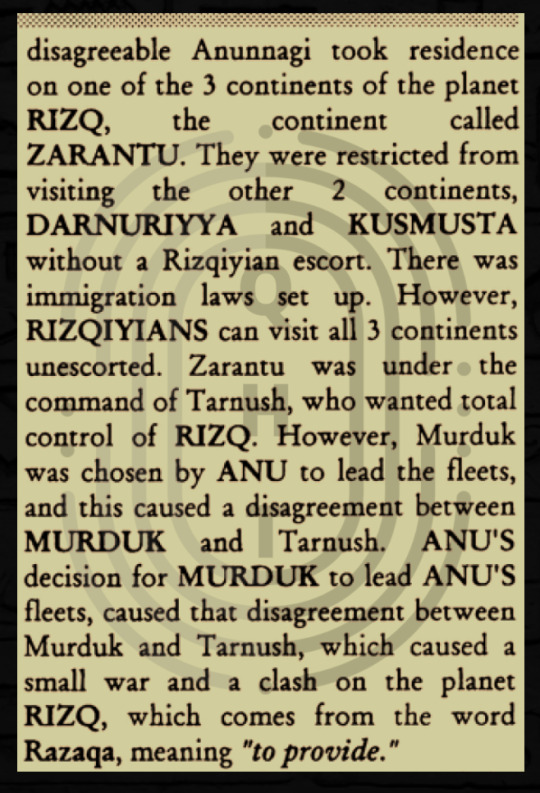
planerizq.tech Illuminate Mnemiopsis [I'M] leidyi Underneath Tiamat's Ancient Mesoamérica of Atlantic & Pacific [MAP] Ocean Floor Terrains of MUUR ANUNNAGI GOLD EARTH [MAGE] ESTATES [ME] @ montereybayaquarium.org

1968-michaelharrelljr.com's HOLOGRAMMATIC 9etherjunkdna.com domain estates of harrelltut.com... bee broken into million+ parts and each one is the same, so it is with its self replicating cells

eye thank [e.t.] archangel [anunnaqi] michael [murduk]... on the bottom & underneath Our Ancient Pacific Ocean Floor 2 Our PARALLEL Holographic Earth of RIZQIYIAN [HER] Origins

quantumharrelltech.ca.gov = Our Mysteriously Hidden [Occulted] Subterranean 9 Ether Antediluvian [SEA] MU AMERICA of MESOAMÉRICA = ATLANTIS OF LEMURIA [MU]

eye amu13.com domain of mu-atlantis.tech records

mother underneath [mu] the atlantis pacific [map] ocean

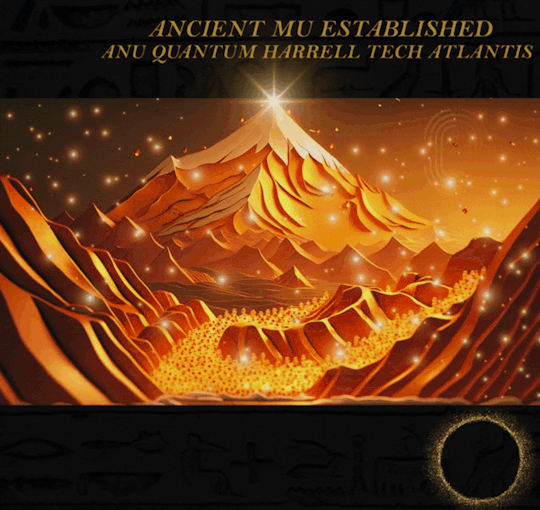
© 1698-2223 QUANTUM HARRELL TECH LLC All LOST ANCIENT [L.A.] ATLANTEAN DNA [A.D.] DotCom [A.D.] + DotTech [A.D.] + Pre 1698quantumharrellgov.tech Domain Name Rights Reserved... since WE ANU GOLDEN ERA [AGE]!!!
#monterey bay aquarium#quantumharrelltech#u.s. michael harrell#kingtutdna.com#holy tablets#planetrizq.tech#enqi nudimmud#archangel uriel#archangel michael#we aluhum anunnagi
3 notes
·
View notes